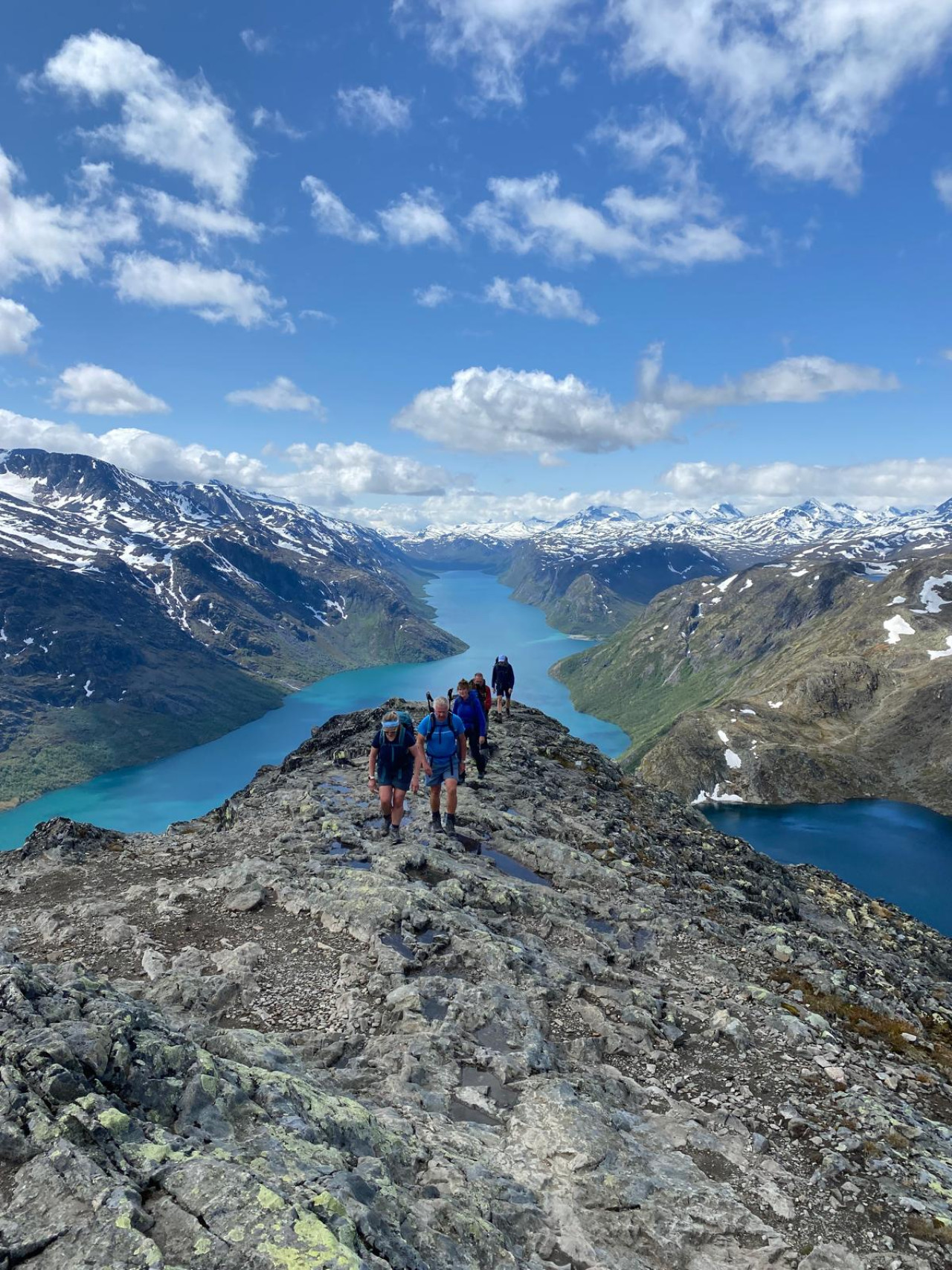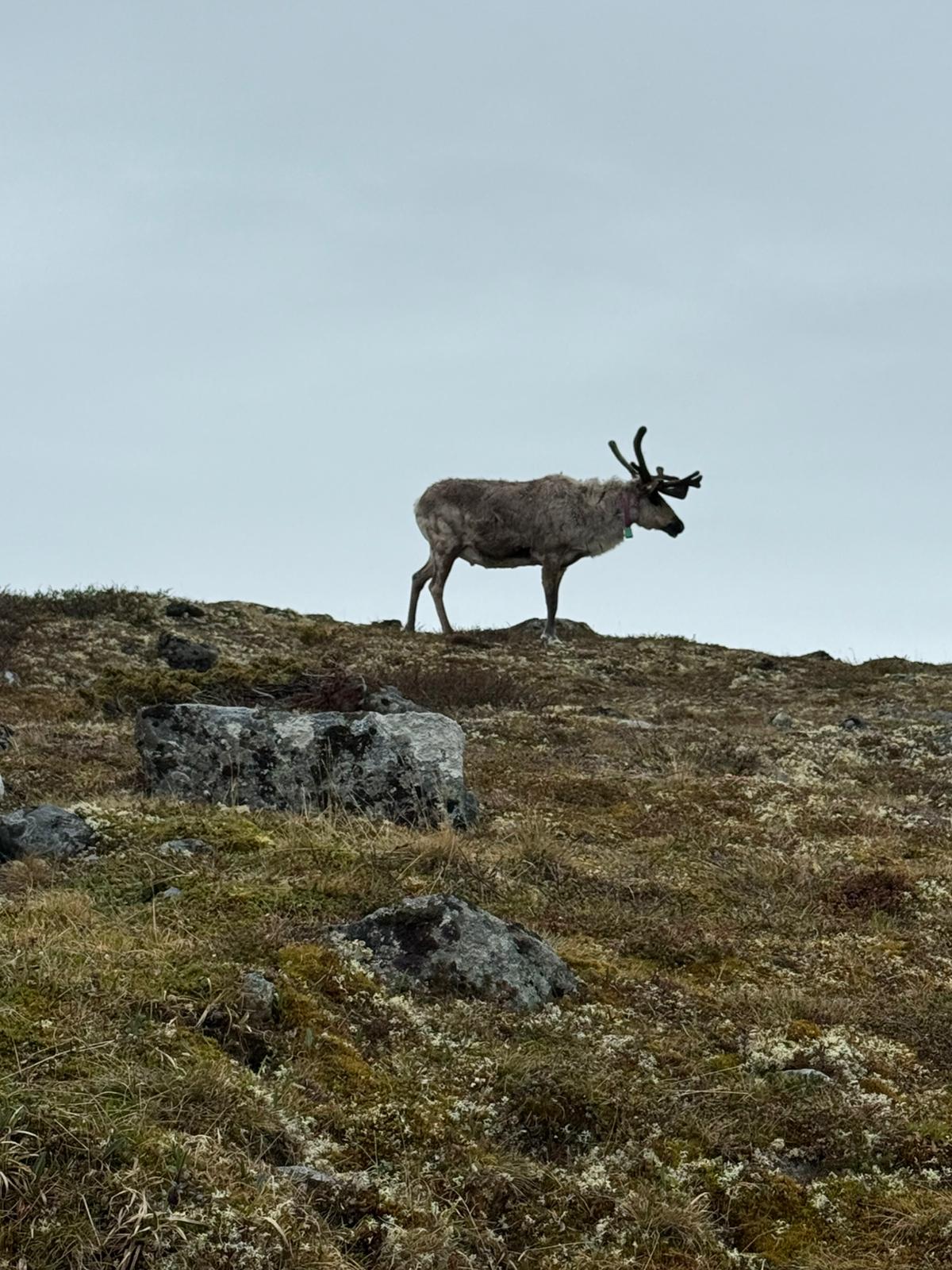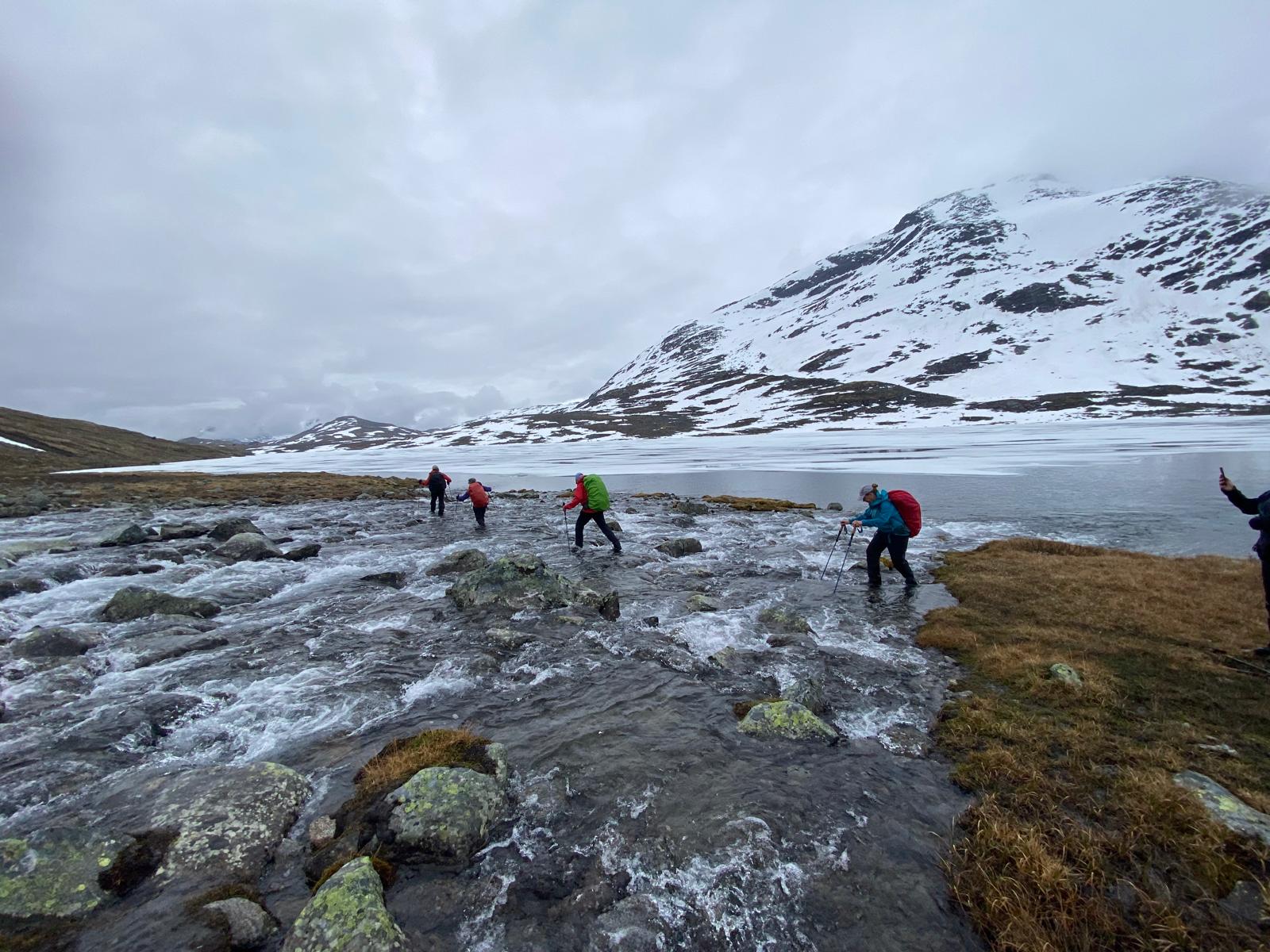 Besseggen Ridge
Besseggen Ridge
What’s it like to trade skis for hiking boots and revisit a familiar landscape in a new season? Our Program Manager Byron returns to Norway’s Jotunheimen, this time in summer, to walk the trails our clients know so well. Here, he shares his experience of remote ridges, wild reindeer, and the quiet magic of Norway’s high country.
I wanted to experience Norway and the Jotunheim region from a new perspective. I've been further east of there for a week of cross-country skiing on the Peer Gynt Trail, and my partner Cordy and I also spent about eight weeks in Norway a few summers ago doing day walks. This time around, I wanted to do a full summer trek and really understand what our clients experience on the ground.
The people are welcoming all year round, but the seasons feel very different. In summer, everything is more relaxed, the trails are quieter, and there's a sense of space that you don’t often get in the Alps. Winter is well-organised despite harsh conditions - the transport systems work smoothly. June marks the start of the trekking season, and it gets busier into July and August. But by mid-September, many river bridges are taken down, and snow returns soon after.
The food was a real highlight. Traditional Norwegian meatballs, usually lamb or porl, were delicious. One night we had an amazing beef meal, and the group actually said they’d have paid restaurant prices for it. The fish was also top-notch - trout served with potatoes and local vegetables. Breakfast was a big buffet of local cheeses, cured meats, and other treats and each morning you make your own packed lunch from breakfast which is a real treat. By day three, cinnamon buns became a group tradition - paired with coffee or a local beer in the evenings, though never at the same time!
Besseggen Ridge was incredible. It’s known as one of the top 20 hikes in the world, and we had perfect weather for it. It was our busiest day, mostly because the ferry brings groups to the trailhead. But even then, we’re talking about 40 people at a time, still very manageable. The next day’s hike to Glitterheim was also a favourite. We passed beautiful lakes, climbed steep terrain, crossed snowfields, and traversed a wild, rocky plateau. The landscape was stunning - completely remote, no roads, no pylons, no lifts, just nature.
We saw reindeer almost daily, managed herds rather than wild, but still wonderful. The males often wear bells. We saw calves too, which the group loved. We also spotted ptarmigan and white-tailed eagles - the largest eagles in Norway. Seeing all of that really added to the sense of being in a completely different environment.

A very local hiker
The trek itself is remote, so cultural stops are limited. But we did pass through Lom at the beginning, which has a famous wooden stave church. These structures are held together with pegs -no nails or screws - and date back to Viking times. It's an iconic part of Norwegian heritage.
It reminded me more of Scotland than the Alps - rolling hills, snow patches, and glaciers. You don’t get the towering peaks of the Alps, but the landscape is raw, remote, and dramatic. The quiet is striking. No roads, no lifts, no noise. It feels pristine.
Very changeable! Classic northern mountain weather. We had everything - hot days for shorts and t-shirts, rain, wind, even minus-five with hats and gloves. If you didn’t like the weather, you just waited an hour, that how fast it changed. I consider it far more pleasant than the 35°C heat waves hitting parts of the Alps this summer.

Mainly in the huts. The guardians were incredibly friendly - Marius at the Gjendesheim Hut even gave humorous introductions to the evening meals. On the trails, people were polite and greeted each other, but it’s quite isolated, so deeper interactions usually happened over dinner in the huts.
Yes, it was very clear. At two huts, we saw youth camps in action. One had young children, and another had 11–12-year-olds who cycled in and spent their evenings swimming and exploring. It’s obvious that being outdoors is a fundamental part of life in Norway from a young age.
DNT is Norway’s trekking association, and they run a lot of the huts. Many are staffed in the summer and offer a great balance between tradition and comfort. Some huts are 300-400 years old but have modern facilities, including drying rooms and even lakeside saunas. They’re well set up for both summer hiking and winter touring.
This was an experienced group who really enjoys exploring new places. They found it more physically demanding due to the terrain and carrying their own gear, but they loved how remote and quiet it was. It is far more pristine than the Alps in their opinion .
If you’ve already done Alpine treks and want something quieter, more remote, and less impacted by tourism, Jotunheimen is ideal. The food and accommodation are excellent, everyone speaks English, and the landscape is extraordinary. Plus, Norway isn’t facing the same heat and water shortages we’re seeing in the Alps.
My waterproofs! Being comfortable in wet weather was key. We’ve also now added gaiters to the recommended kit list because of all the river crossings and time spent walking on snow. They made a big difference on this route.
If Byron’s experience has sparked your curiosity, you’re not alone. Norway’s trails offer a refreshing alternative to the busy Alps, with wild landscapes, quiet paths, and warm hospitality. Our 2026 Jotunheimen departures are already in the works - so if you’re dreaming of a summer hike that’s a little off the beaten track, this could be the one.
Keep up to date with Tracks and Trails through our newsletter, click here to sign up. For more information about our adventure holidays, either bespoke or Scheduled Departures, speak to one of our expert team by calling +44 1663 434468 or email info@tracks-and-trails.
In winter, we offer snowshoeing and cross-country skiing, while in summer we would encourage you to join us for hiking, and trail running.
